Quantum optics & quantum information
 World-class groups engage in both theory and experiment, with strong and developing collaboration across several institutions. We are particularly well placed in quantum information and quantum metrology, with the RAE-flagged CNQO group at Strathclyde linked to experimental work on entanglement (Glasgow, St Andrews), quantum key distribution (Heriot-Watt) and optimised measurements (Strathclyde). There is excellent work on cold atoms and BEC at Strathclyde and St Andrews, on novel trap designs at Heriot-Watt and St Andrews, and on quantum dots as single photon generators and single photon detection for quantum cryptography at Heriot-Watt.
World-class groups engage in both theory and experiment, with strong and developing collaboration across several institutions. We are particularly well placed in quantum information and quantum metrology, with the RAE-flagged CNQO group at Strathclyde linked to experimental work on entanglement (Glasgow, St Andrews), quantum key distribution (Heriot-Watt) and optimised measurements (Strathclyde). There is excellent work on cold atoms and BEC at Strathclyde and St Andrews, on novel trap designs at Heriot-Watt and St Andrews, and on quantum dots as single photon generators and single photon detection for quantum cryptography at Heriot-Watt.
Biophotonics
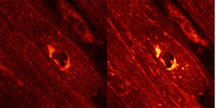 This union of photonics and biotechnology presents some of the most exciting scientific and commercial prospects for the 21st century. Photonics will push biomedical science boundaries at all levels, from novel techniques for basic biology to ultra-sensitive detection methods for point-of-care applications. With its underpinning research strengths in photonics and life sciences, Scotland is becoming an international powerhouse in this area. Strong inter-disciplinary activities exist at Strathclyde, Glasgow, Edinburgh, St Andrews and Heriot-Watt, increasingly linked by significant collaborative EPSRC and SHEFC projects.
This union of photonics and biotechnology presents some of the most exciting scientific and commercial prospects for the 21st century. Photonics will push biomedical science boundaries at all levels, from novel techniques for basic biology to ultra-sensitive detection methods for point-of-care applications. With its underpinning research strengths in photonics and life sciences, Scotland is becoming an international powerhouse in this area. Strong inter-disciplinary activities exist at Strathclyde, Glasgow, Edinburgh, St Andrews and Heriot-Watt, increasingly linked by significant collaborative EPSRC and SHEFC projects.

Ultrafast Sources and Applications
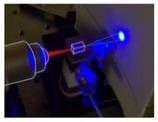 Scottish university researchers have distinguished themselves internationally in the field of ultrafast optics both by demonstrating novel ultrafast laser sources and by developing powerful new diagnostic and investigative techniques that can probe femtosecond dynamics in matter, e.g. THz spectroscopy and synchronised optical/electron pulses. This allows breakthroughs in many fields including tunnelling and superluminal light propagation, novel superconductors, colloidal semiconductors and ultrafast dynamics in biological samples. There is strong synergy in the Scottish ultrafast laser science community, with good coverage of theory and experiment and a fruitful balance between fundamental and applied science.
Scottish university researchers have distinguished themselves internationally in the field of ultrafast optics both by demonstrating novel ultrafast laser sources and by developing powerful new diagnostic and investigative techniques that can probe femtosecond dynamics in matter, e.g. THz spectroscopy and synchronised optical/electron pulses. This allows breakthroughs in many fields including tunnelling and superluminal light propagation, novel superconductors, colloidal semiconductors and ultrafast dynamics in biological samples. There is strong synergy in the Scottish ultrafast laser science community, with good coverage of theory and experiment and a fruitful balance between fundamental and applied science.
Novel Light Sources
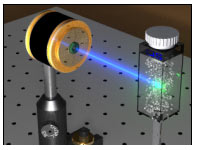 Scotland has a strong international reputation for innovative research in laser device physics, both spawning successful commercial products and enabling leading-edge precision research. The strongest growth areas are semiconductor visible-light emitters and solid state lasers. Strathclyde and Glasgow EEE have led a major initiative to create a top-quality growth, fabrication and characterisation capability at Photonix Ltd for semiconductor devices. Solid-state laser research, on challenges such as ultra-narrow linewidth lasers and high average-power devices, is particularly strong at Strathclyde, Heriot-Watt and St Andrews.
Scotland has a strong international reputation for innovative research in laser device physics, both spawning successful commercial products and enabling leading-edge precision research. The strongest growth areas are semiconductor visible-light emitters and solid state lasers. Strathclyde and Glasgow EEE have led a major initiative to create a top-quality growth, fabrication and characterisation capability at Photonix Ltd for semiconductor devices. Solid-state laser research, on challenges such as ultra-narrow linewidth lasers and high average-power devices, is particularly strong at Strathclyde, Heriot-Watt and St Andrews.
Applied Photonics
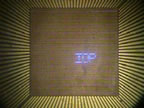 There is strong EPSRC-funded research in sensors, measurement techniques, adaptive optics and laser/materials interactions, leading to strategic research in many sectors of industry and medicine. Notable contributions are at Heriot-Watt (Scottish Inst. of Manufacturing), Strathclyde (Inst. of Photonics), St Andrews (Photonics Innovation Centre) and Glasgow.
There is strong EPSRC-funded research in sensors, measurement techniques, adaptive optics and laser/materials interactions, leading to strategic research in many sectors of industry and medicine. Notable contributions are at Heriot-Watt (Scottish Inst. of Manufacturing), Strathclyde (Inst. of Photonics), St Andrews (Photonics Innovation Centre) and Glasgow.
Micro Structures & Materials
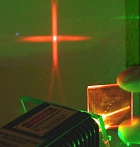 Scottish research in nano/micro-photonics, i.e. the management of photons by nm and µm scale structures, is broad and high-class. Coupled with novel materials these are key technologies at the interface between the microscopic and the nanoscopic worlds of electronic and biological systems. World-class research includes nano-/micro-optics, thin films, micro-structures for sensing and metrology, optics for interconnect, and materials (inorganic and organic semiconductors) - from basic materials physics and theory to integrated optics and devices.
Scottish research in nano/micro-photonics, i.e. the management of photons by nm and µm scale structures, is broad and high-class. Coupled with novel materials these are key technologies at the interface between the microscopic and the nanoscopic worlds of electronic and biological systems. World-class research includes nano-/micro-optics, thin films, micro-structures for sensing and metrology, optics for interconnect, and materials (inorganic and organic semiconductors) - from basic materials physics and theory to integrated optics and devices.